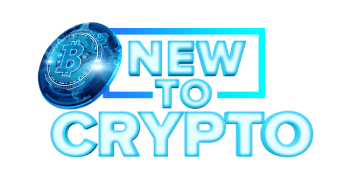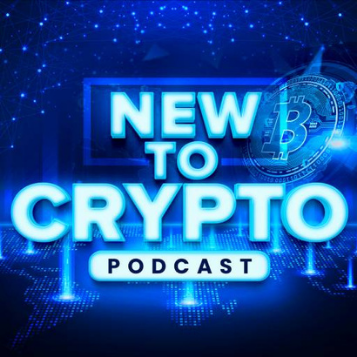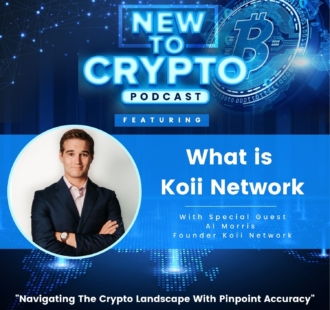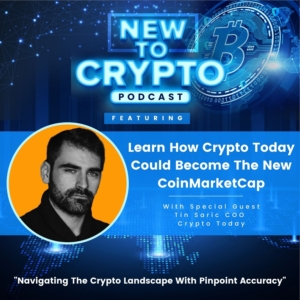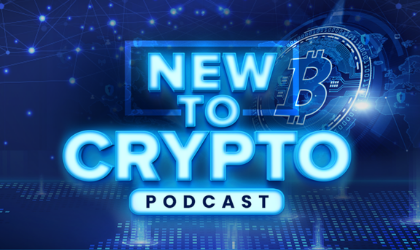What is Koii Network With Founder Al Morris
SUMMARY KEYWORDS
koii network, koii, token, al morris, decentralized, tokens, people, crypto, create, internet, wallet, content, earn, upload, stored, asset, storage, coin, called, blockchain, systems, atomic, bit, podcast
SPEAKERS
Crypto Travels Michael, Al Morris
00:01
Welcome to the new to crypto podcast designed to guide you through the crypto landscape with pinpoint accuracy created for the new and intermediate crypto investor. Join your host crypto travels, Michael as he takes you through the different facets of getting started and succeeding in your crypto journey. New to crypto podcast brings you new episodes daily Monday through Friday with surprise bonus episodes sometimes on the weekend. Let me ask you, Are you new to crypto and don’t know where to start? Are you more experienced but have questions? Then you’re in the right place. This podcast is designed for you coming at you from the training center in the lifestyle design studio. Here’s your host Crypto Travels Michael
00:53
Brave wallet is the first secure crypto wallet built natively in a web three crypto browser, no extension required. You can store, manage and grow your portfolio, get NFT’s and multi chain support. Download the brave privacy browser at brave.com/newtocrypto and click on the wallet icon to get started. Today I have on the show Al Morris the founder of Koii network. This is an awesome project and you definitely do not want to miss this episode. Stay tuned to learn all the exciting things that koii has going out. Man, it’s a pleasure to have you on the show. Thanks for coming out. Yeah, really great to be here. Before we dive into Koii, can you tell our listeners just a little bit about yourself? Sure. So I was working in the robotics industry back in 2015 2016 started kind of realizing that a lot of the stuff that I was working on was sort of downstream from where the real problems were happening, which is in the information space, the Internet was sort of taking over the whole economy. So the factories that I was working in often were dominated by the marketing minds to talk to companies. So I moved over into the internet world started understanding that and kind of after looking at digital marketing for a while really wanted to make censorship prevention systems and kind of free speech systems that can hopefully make the internet a little bit more of a level playing field. So it wouldn’t necessarily be dominated just by the people who have money to advertise and market and that kind of thing. So that’s kind of how we found ourselves building quite awesome. And I understand you started coil like back in 2017. Can you give a little bit of an overview about what what is coin network. So in its current form, Koii is a way of deploying decentralized applications that are truly decentralized, where we include end users devices, their phones, computers, you know, even if they have a large hosting setup, we can let the end user rent that out to other people who want to actually provide a decentralized experience have fully kind of trustless applications. And we have monetized this entire thing by minting a token called the coin token, scale I and coin is awarded only to people who actually produce content into this network. So as a node operator, you don’t mind new tokens, you actually just earn them for doing services, which kind of puts the power back in the hands of the content creators. This actually came through from, as you said, a much earlier idea which was called breadcrumbs browser. And so we were trying to make a an open and kind of community based way of browsing the internet so that you could have context from other people kind of like when you see comments on something on social media gives you a little bit better context of what you’re looking at. We wanted to give that experience to people all the time while they’re looking at the Internet. And that kind of led us down this path of trying to build better and better decentralized tools. I ran a company called we teach blockchain.org in Chicago for quite a while, kind of teaching people about Dows and how all this stuff fits together. Because really, it goes well beyond cryptocurrency, you know this, the currency itself. They’re really there as an incentive mechanism. But the tools that are behind them that they enable are really quite powerful. And that’s kind of where we get this idea of trustlessness because you can trust that other people are kind of engaged in the same game that you are. Okay, and can you tell us share with our listeners, like who does Koii help, like he touched on, you know, some of the information that you were touching in the beginning, but who does it actually help. So for content creators who want to mint and publish their content, you can just play, you can drag and drop an image or a video or anything like that. We have a mobile product coming out that allows you to even if you’re in China, or Russia, and there’s censorship situations, you can anonymously download this toolkit onto your device, you can publish content straight into a decentralized network where it can’t be censored. And then you can actually earn cryptocurrency and other people look at it. So that means you can then either use that currency to fund further stuff that you’re publishing or you can actually sell it and you know, fund your lifestyle. Wow. Okay. Definitely like I like where you’re going with that. Why did you call it Koii? What is their story behind it? Or where do you come up with that? So of course it is an abbreviation so it stands for knowledgeably open an infinite internet, just kind of the grand vision that we have for what this could accomplish. So the current Internet actually exists more as a kind of a fragmented system. So we have several different internet’s around the world and they don’t actually talk to you other that well, not only that, but a lot of the stuff that’s on the internet is not actually knowledge or truth. It’s more like a kind of misinformation. It’s almost all designed with this kind of coordinated marketing. So we have this ambition of creating something more akin to Wikipedia type experience where the content is moderated by the community and you have kind of a gradual progression towards better knowledge. Okay, and what would you say are some of the like the top benefits with Koii? Is there anything else out there, like what you’ve built. So the point of a coin is that it aggregates together a lot of other systems. So decentralized storage, like file coin, already allows you to take a file and store it on 1000s of other people’s computers. And those are really powerful just on their own, because that means that instead of it being stored on Facebook server where Facebook’s liable for it, or where they have control of it, for that matter, now it can be stored on other people’s devices, and you’re paying them a small amount of cryptocurrency to do that. The trick though, for most people is that they don’t have a good way to buy cryptocurrency. Or if they do, they don’t have a good way to trade the currency they might buy. So Bitcoin or Ethereum, for something like a storage token, and it’s very complicated to do all those extra steps. So what we try to create is a way for somebody who is not actually going to buy the tokens upfront to come into the ecosystem and earn their fair share. And then they can actually start to earn enough to be able to participate kind of gradually unwrap them. The cool thing about this, though, is because all of this content is stored on this open infrastructure, it is all available. And so it’s all open. And everybody can actually go in and look at the information behind the algorithm and use you, for example. So if you didn’t like Facebook’s newsfeed, you could take your content over, make a new website, and invite your friends to go there. And you can tweak the algorithm a little bit and have your own version of that ecosystem and start to build your own community where you know, you show the things that are important to you, Man, that’s really cool. All right, so we’re gonna have all of your links on our episode Blog Post page for today. So that way, all of our listeners can actually go check out what you guys have going on. You touched on our weave in Filecoin. How does Koii actually utilize Arweave? How does it tie? Is it? I assume it’s for storage? Yes, Yeah. So Koii is a layer and protocol, we call it. So we have a network of nodes that do settlement tasks like actually storing and transferring value very similar to something like Solana. And that’s a very temporary network. So it doesn’t have the immutable qualities. It basically recycles information constantly. And if you want to keep information on it, you actually have to pay rent. So what we do though, is we kind of pair that with the centralized storage, so that you can have this kind of long term storage location. And that’s kind of where our work comes in. So with a lot of the assets we create, we create the asset on our roof initially. So NFTs, for example, we upload the video, we wrap it with an NFT that all lives inside of our roof. And then we use the coin network to transact that value and kind of interact with it and do all kinds of additional scalable features. Okay, I’m glad you brought up the NFTS I wanted. That’s actually one of the things I wanted to ask you. I was actually on a live YouTube that you guys were part of at the end of last year. And you guys touched on NFTs, I think it was for developers. But can you share with us about what Koii is doing with NFTs a little bit deeper? Sure. So this is this idea of atomic NFT’s. And these are kind of meant to be the fundamental building blocks of this new internet that we’re trying to create. And so the way that we see that as with most NFT’s, currently, you have a contract on something like Ethereum, or polygon or Solana. And then it mirrors or a bit maps, you should say to a to immediate locations. So there’s something out there on Filecoin. Or maybe it’s just on Google Storage. And we’re saying that this contract on Ethereum owns that media asset. So we kind of want to simplify that a little bit and make it a little bit more efficient. So what we did instead was we added smart contracts into the storage layer. And so the storage layer itself now contains the smart contract along with the media file all in one location with one ID. And this is a lot more efficient, both from a cost standpoint. So you can mint like a you know, one gigabyte movie for about like 10 cents will be stored permanently onto our weave. And then you can take that asset that you’ve created on our weave, and you can mirror it or wrap it into something like Ethereum or so on and transact on the marketplace. So it’s, it’s a little bit of a simpler way for a lot of people. And then we built a wallet around that called thing that’s got about 20,000 users. And with any you can drag and drop files and make these atomic assets, the finnie wallet, the links definitely on our episode Blog Posts page. So we have listeners listening if they wanted to, you know, upload, like, you know, a gig video, like you just mentioned, how and where would they go to do that. So if you go through this, any wallet, I think there’s an upload limit of 10 megabytes. But we also have an interface on port Iraq. So I think it’s a little higher, and we have people on our team that can help you do larger and larger files. Awesome. And I was going through some of your website and some of your information. And you know, you guys have talked about coin nodes. Can you break down for our listeners a little bit more about what our coin notes are?
09:46
So there’s this thing that’s been happening with many blockchain systems where you have the blockchain itself and then you have your website that talks to the blockchain. And there’s usually a little bit of information that’s missing or there’s some things that you can’t quite facilitate. So an example of this would be If you personally don’t want to hold your keys for something like something that you’re just accessing temporarily, you might want to be able to log in with a username and password. And so these kinds of intermediary steps that exist, make it difficult for apps to be fully decentralized. Because often you end up having a server that’s talking to your smart contract, it might even control the smart contract. And so what we did with keynotes was we created an arbitrary way to decentralize those servers that sit in the middle. And so you can do something like, you know, create a search function that indexes all of the NFT’s that you have, and then shows them into a website, which otherwise you would have to probably do that in a centralized way, which means that it eventually becomes a kind of a threat from a hacker standpoint. So somebody can attack your system. So with coin nodes, you can do this all using other people’s computers. We’ve integrated all kinds of like fancy services, like a name, service, and some kind of like other quick tools like caching. And so for a developer who’s coming in from kind of the traditional JavaScript world, they can sit down with Koii, and they can deploy something that feels like a traditional myrn stack app, which is like the traditional JavaScript world. And so if somebody comes over to us, they can quickly kind of get into the decentralized tech without actually having to go and sit down and write smart contracts. And then they can actually do this in an even more scalable and decentralized way to the tokens, the babies by notes are actually the same token that we gave up based on intention. And so when you create these assets, these atomic NFT’s are here to create a social media website using Koii, you can mine these attention tokens and then use that to pay for your hosting. So we try to create this full cycle economy.
11:28
Okay, I want to get into your token in a moment. But we touched on atomic NFT’s just briefly, but you know, for most of our listeners, that’s going to be a new phrase for them, atomic NFT’s, can you break it down kind of in a simplistic way? Yeah, sure. So with an atomic NFT, basically, what you’re saying is, I own this piece of storage, we’re typically when you upload something to decentralized storage, it’s owned by your key, but it’s not necessarily owned in a transferable way. So what we did was we added some ownership properties, as well as some kind of metadata into the actual file upload. And so instead of it just being like the raw file, we’ve created almost like a new file type, like you know, how you kind of have like a JPEG, or PNG or a PDF is atomic and a fuser kind of a way of structuring the data that goes into decentralized storage so that it has the ability to be transferred to somebody else. And also to have the ability to say that someone specifically owns it, so that it can be used with another NFT. Because what was happening for a while was that you could go on to the open sea, and you could look for the IPFS, or the Filecoin, or the RVV URL of the asset. And then you could go into another NFT, that’s also pointing to that asset, and somebody would have no way of knowing whether yours was real, or the one that was created before it was real. Close, if they knew about the other one, they might be able to figure that out. But it’s kind of hard to tell initially. So with this, the asset that’s on our reef is the thing that is the asset. And so there’s no risk of somebody creating another pointer fraudulently using that. Excellent. So you definitely overcame a problem that definitely exists in the industry, you know, so
13:02
Yeah, there’s some cool things you can do with it as well. So because it’s programmable storage, you can actually go and you can make them dynamic. So we have a couple of these NFT’s that are called the Narcissus flowers, so we released a collection of them. And these ones respond dynamically to attention. And so if you give the narcissist flowers more attention, like if more people actually go and look at them each day, the flower will open. And so it’s like actually evolving in real time, it’s a fully self sustaining application didn’t even pay as its own hosting costs, user attention that appearance, or working on other kind of properties like this, we have a thing called content out, that works kind of the same way. So as a guy in Australia, that’s been uploading photos of like posts, photos of the internet, you’ve got all the wires coming in out of the post. So he’s uploading these photos, he’s got other people in other countries also uploading these photos. And the collective of all of these photos earns points based on how many people are looking at it, which then get distributed to all the people who submit images, and all the hosting costs get paid by the same project. So it’s kind of the self sustaining nature of the media.
14:02
Where do you get the idea for like the opening flower, for example, and that type of NFT that one wasn’t mine, actually, that came from Cullen or head of ops? There’s been a few other iterations of these kinds of dynamic FFTs as well. There’s a fellow by the name of Darren Klein who runs the NFP podcast or coin telegraph. And he made a whole bunch of zombies that actually evolve as you look at them as well. And so like when your zombie gets really popular, you know, it starts smoking when it gets to I think like 10 views changes in skin color to like kind of orange like it’s on fire. I think when it gets to 100 it gets a podcast, Mike. Nice. Awesome, man. So can you break down a little bit about your token for everyone listening? Sure. So we’re minting a token. We have a small premium on that, like 10 billion tokens. And then what we’re hoping to do, though, with the quota is we want the community to own this over time. We see this as kind of like, the easiest way to get lots of people involved because if you show it to lots of your friends And you can mine a bunch of these tokens. And so over the next 10 years, we’re going to be giving up half the control to the community. And we also earmark half of the pre money to be given out as community rewards. So our goal is basically to give away access to all of these devices that everybody’s contributing. So we’re giving everybody an opportunity to run Node and earn tokens that way, you can publish content, you can also earn tokens that way. And really what we’re hoping to create is kind of an economy where users are actually exchanging value directly with other users. It’s not necessarily with us, we’re just kind of here to write the code. Absolutely. No, that’s awesome, man. So out here, your project is decentralized in you know, and that you’re talking about storing the medium and using our we’ve, what are your thoughts with decentralized media. So this whole kind of idea of blockchain is all about creating open access for people. And I think this is gradually becoming a larger and larger problem. If we look at a lot of the conflicts going on in the world today, there is a huge problem with the propaganda cycle, basically. So rhetoric gets created to motivate action in democratic countries. And that rhetoric often lives on beyond the conflict that it was created to motivate. And so we’ve created this kind of giant echo chamber where there’s all of these lies floating around on the internet. And they get larger and larger every day, because they keep building their following even sometimes long after they originally had served their purpose. And so what we’re trying to do with decentralized media is to create an open standard where things can be captured immutably and hopefully, over time, people have the ability to kind of develop a tolerance to the things that are more radical so that we can start to focus on the things that we have in common instead of the things that divide us. And so the really exciting thing about that, at least for me, is that that means that over time, if this kind of a system reaches critical adoption, then it becomes progressively harder for people to manipulate each other using the internet, which I think is really important. Because, you know, 10 years ago, the leaders in the world probably weren’t that internet savvy. Now, a lot of them were older, and they hadn’t had time to learn yet. But it’s definitely becoming true that like, you know, today’s leaders are quite aware of how to actually use these systems to regulate people. I think Facebook’s being investigated for things like election meddling, and something like 12 countries, and not necessarily Facebook themselves as an organization. But the platform has been used to control people. And I think the potential of decentralized media is that the internet becomes a tool that actually kind of liberates people more so than kind of fascism. And rather than distracting you, it could actually improve your life. Brave wallet is the first secure crypto wallet built natively in a web three crypto browser. What’s web three, web three is freedom from big tech in Wall Street, more controlling better privacy, but there’s a weak point in web three, your crypto wallet. Most wallets are browser extensions, a web two technology, that means the same old risks, app spoofing, phishing, scams and theft. Brave wallet is different. Brave wallet is the first secure wallet built natively in a web three crypto browser, no extension required. With brave wallet, you can buy store, send and swap assets, manage NFT’s even connect other wallets and daps. All from the security of the best privacy browser on the market. Whether you’re new to crypto, or a seasoned pro, it’s time to ditch those risky extensions, it’s time to switch to brave wallet, download brave.com/newtocrypto and click on the wallet icon to get started. Absolutely. That’s one of the most awesome things about crypto and blockchain in general is, is the freedom you know, there’s the freedom is in comes in so many forms, just like what you were sharing with decentralized media, the freedom I can send you some some coins, some tokens right now. And there’s there’s no middle person, you know, it’s just, you’re you’re in another country that I’m currently in right now. And there’s, you know, it’s just peer to peer and, you know, there’s no permission asking or, you know, things like that. So it’s, it’s, it’s a game changer for the future of the world that we live in, you know, yeah, I think from a financial inclusion standpoint, too, it’s really exciting. Because in the past, there have been a lot of revolutions that have asked people to participate out of their own kindness without really asking much in return. I think the cool thing about this revolution is that if you get in at the ground floor, you can actually kind of ride the wave, even though you’re making a lot of better places. And so you get rewarded in two ways you get a better world you get to live in and you get to own a piece of it, which is unlike most systems that have ever existed before. Absolutely. And you know, not to mention, the token supplies, you know, are fixed with most projects, as opposed to, you know, Fiat issued by countries. So, I was, is there anything you want to share with upcoming information or upcoming news that you guys have, you know, your 2022 roadmap
19:48
With Koii, as there’s one kind of exciting release coming up. We built this mostly in support of this idea of a content out and so the tool is basically like Snapchat. So you can download on your phone, you don’t have to go through an app store, it’s completely decentralized, you just go to a variety of different websites, and you can install it right off the website. And once it’s on your phone, you can use it like a snapshot to capture anything, take a photo or video, capture some audio, maybe just write something out. And you can submit that into our decentralized media network. And once you do, you’ll start earning quotations. And you can do this all basically for free, because you don’t have to actually pay to upload anything, you just take photos, and then you can earn tokens. And so that’s coming out in probably the next couple of weeks. And then we’ll also have notes coming out after that. So once you earn some tokens by posting content, then you can stake those tokens and run a note to get some passive income it should all
20:39
and what would be the benefit of sharing, like taking photos, sharing content, like in Snapchat, you’re sending it to, you know, I guess you’re following, but how can you break down a little bit more about, you know, like, let’s say, you know, I don’t know, I take a picture of the ocean, the beach, right? And I upload it, like, is it gonna be where people are following me? And they’re gonna be able to see that? Or does it just generalize to, you know, your entire media network? How does that work? So we have a lot of people building leaderboards, there’s kind of two sides to this, right, there’s the photos of the beach. And then there’s the photos of the warzone. The photos of the warzone are the ones we’re kind of focused on engaging at the moment, because we really want to make sure that that content gets captured in an immutable way, so that people will be judged in the future for their actions. But the thing about this that’s really exciting is that because it’s all on this general attention system, it’s all open. Anybody who wants to you can make a leaderboard that can access the entire repository of all of this content. And so your photo of the beach might show up in 10 different websites, it’s not just gonna be in one place, we will show up on our official leaderboard. So you can get a quote out loud. So you can see that it’s koi Kayo, I thought rocks are o CK s. And you can see the full attention, leaderboard of all the things that are currently earning koi tokens based on the attention they’re getting. And some of these people are, you know, once they get on the leaderboard, they might get 20 50,000 views, they might make, you know, 10 to 50 to 100 quotes, which, you know, coming into our ICO should be quite nice for them. Nice, man, that’s exciting. Is there anything else that you want to share with the audience, before we wrap up here,
22:08
kind of a slogan, and quite the slogan is to demand decentralization. Because if we don’t demand it, and it doesn’t really happen, this is one of those things where you know, we all have a chance to kind of ask for the world that we want to live in. And so if we keep asking for the world that we want, it will probably happen. It’s just a matter of prioritizing people who are providing the products that you want to use. And so with a lot of the projects that you’ve had on this podcast, you actually listened to a handful of the episodes, it’s just, it’s just a matter of going out and trying their products and seeing how they’re doing. Because it can be really easy to stay in your echo chamber. But if you step outside of it for a moment and try out these new things, there’s a lot of exciting things out there. And honestly, almost every decentralized product that I’m aware of will basically pay you to show up. So create an account, try it out and see how it goes. It can’t hurt.
22:52
Absolutely, and you’re rewarding your users, you know, with Koii, that’s it sharing content, and they get rewarded, you know, receive tokens. It’s always a pleasure to have you on the show. Thanks for coming out. And you’re welcome back anytime, and they will in the future. We’ll have to do a video for YouTube, and we can unpack some more about what you guys have going on Koii. Sounds great. Real pleasure talking to you. Thanks for the great questions. Absolutely, man. If you liked today’s episode, definitely like it. Subscribe to the podcast. Show your support and chime in here tomorrow for another special episode. Until then make it a great day.
23:29
Thanks for tuning in to new to crypto podcast. If you liked the episode, be sure to follow and subscribe. You can listen to every episode on all major platforms. Have an interest in being on the show or want advertising, reach out at new to crypto.io. Head over to our site newtocrypto.io to access the resources mentioned in each episode. Until next time, remember to navigate the crypto landscape with pinpoint accuracy.
